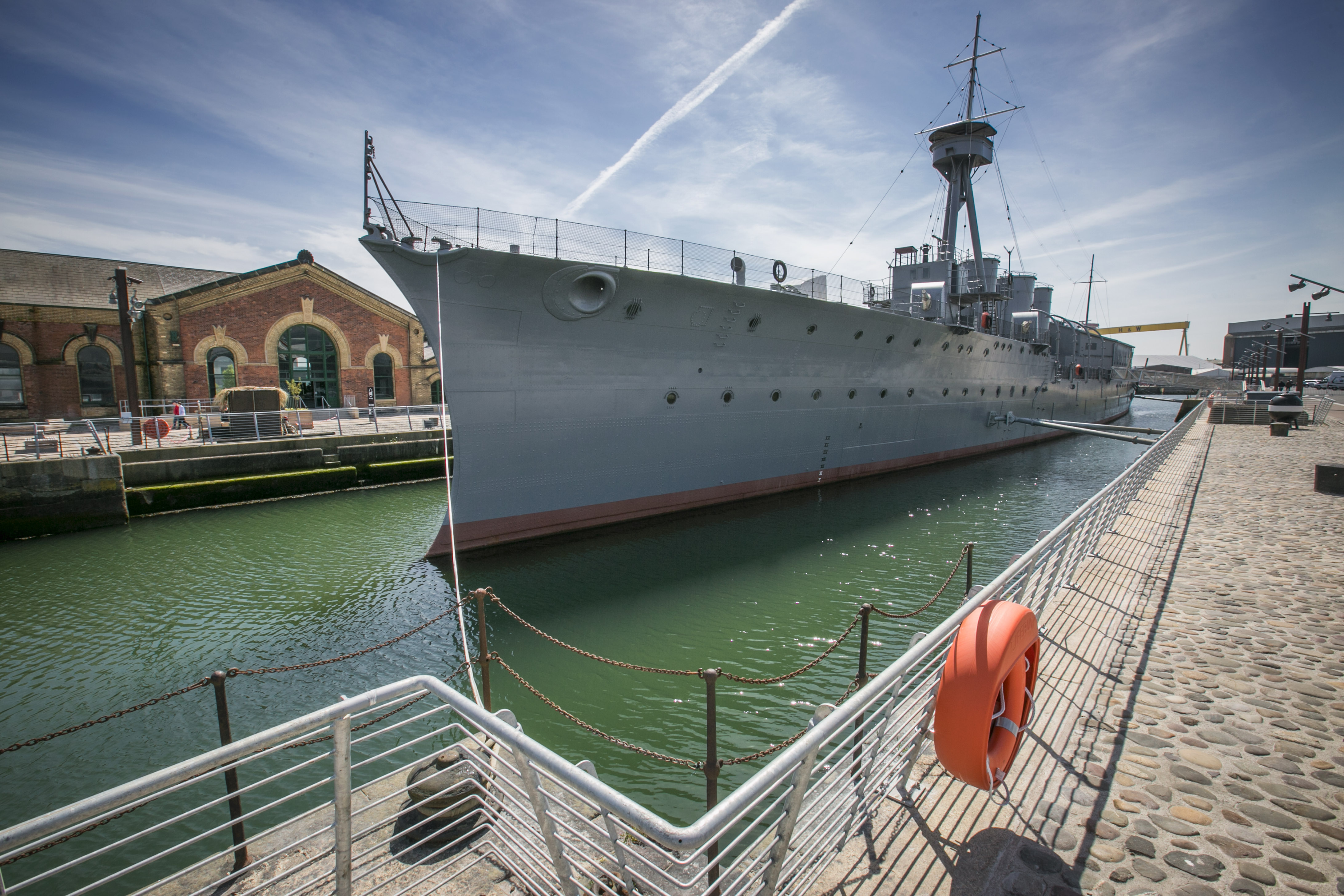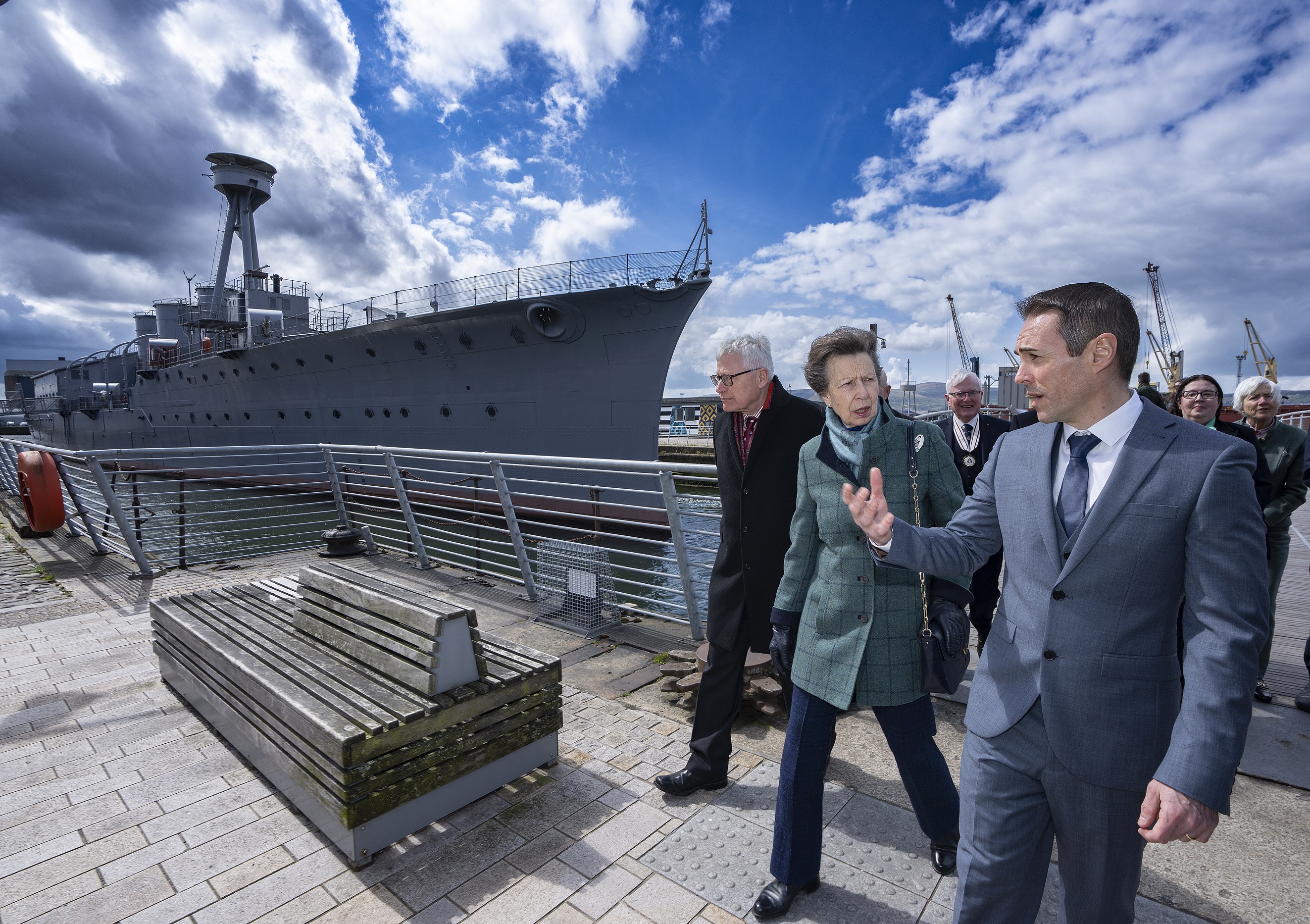
About HMS Caroline
HMS Caroline is one of eight C-class light-cruisers that were ordered under the Admiralty’s 1913-1914 construction programme. Work began on 28th January 1914 at Cammell Lairds shipyard, Birkenhead and the ship was launched on 21st September of the same year, and commissioned on 4th December. During her career, Caroline protected trade by undertaking regular North Sea patrols in World War I and, later on, convoy screening. She saw action at the Battle of Jutland, the only major naval action of WWI.
With the end of the War, Caroline was recommissioned for service on the East Indies Station and in 1924 was moved to Belfast Docks to become the static, floating headquarters of the newly formed Ulster Division of the Royal Naval Volunteer Reserve. She is the last remaining British WW1 light cruiser still afloat and the sole survivor of the Battle of Jutland.
On the outbreak of World War II in 1939 HMS Caroline became a depot ship to an anti-submarine striking force of patrol vessels. With the fall of France in 1940 this force was reinforced and soon increased to 70 vessels. Caroline provided signal and cypher facilities to her attached light craft and as the war developed Belfast soon came to play a vital part in the Battle of the Atlantic.
In 1943, Caroline became the strategic operations base for a force of Destroyers and Corvettes protecting convoys in the North Atlantic. Operations were planned and conducted directly from Caroline where a total six escort groups, each composed of six frigates, were controlled. At the end of WWII Caroline was once again paid off into the Ulster Division of the Royal Navy reserve until 2009. At the time of her decommissioning in 2011 she was the second-oldest ship in Royal Navy service.
About the National Museum of the Royal Navy
On 28th June 1911, The Dockyard Museum opened in Portsmouth, growing and evolving into the Royal Naval Museum, which then became a part of the newly-formed National Museum of the Royal Navy in September 2009. The Museum changed its name to The National Museum of the Royal Navy (NMRN) as the overall organisation grew to also encompass The Royal Marines Museum, The Royal Navy Submarine Museum, the Fleet Air Arm Museum and Explosion! Museum of Naval Firepower.
In 2015, the organisation opened First World War Monitor HMS M.33 to the public, and in 2016 they added HMS Caroline in Belfast, and the Hartlepool Maritime Experience (now NMRN Hartlepool) and HMS Trincomalee to the National Museum of the Royal Navy family.
Restoration and Community outreach
The National Museum of the Royal Navy and the Department of Enterprise Trade and Investment Northern Ireland have worked as partners to restore and interpret HMS Caroline, a lone survivor and living legend. With the help of a grant of £11.5m from the Heritage Lottery Fund (HLF) the ship opened to the public for the first time in June 2016, in the heart of the Titanic Quarter in Belfast.
Caroline has become a venue for lectures on Ireland's shared history, as well as a memorial for the 10,000 Irishmen who list their lives at sea during the Great War. The historic vessel is also the centre of much community outreach work aimed at groups from all sides of the divide, providing a shared and neutral space for learning about shared history.
LATEST NEWS
June 2023 HMS Caroline awarded Flagship of the Year status by National Historic Ships UK Full story
April 2023 HRH the Princess Royal officially reopens HMS Caroline. Full story

Find out more:
www.nmrn.org.uk/visit-us/hms-caroline
Follow them on social media:



